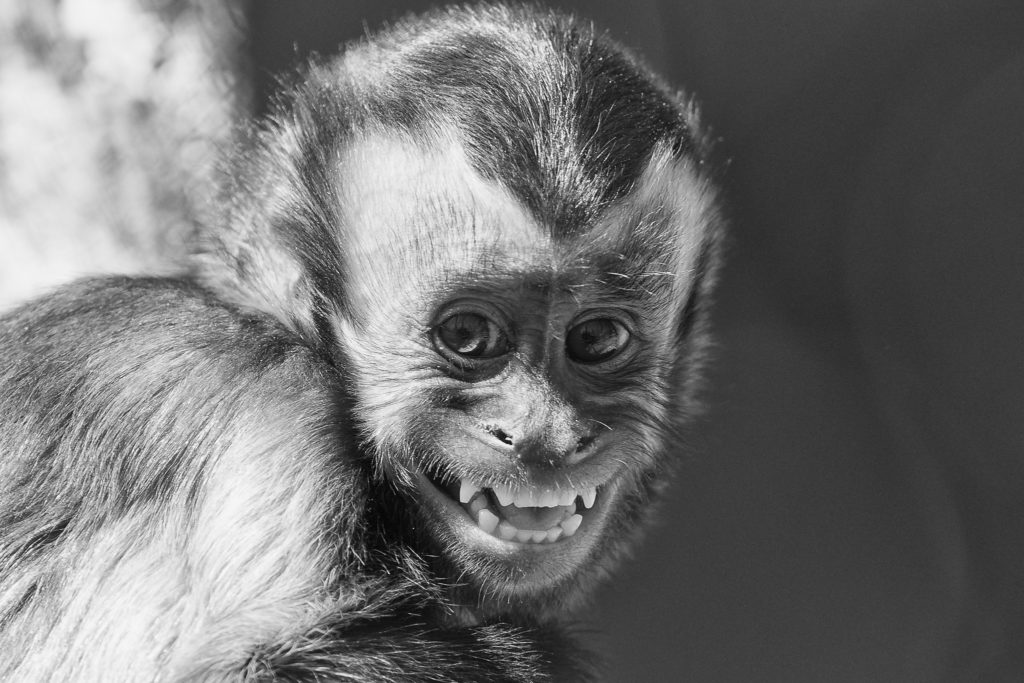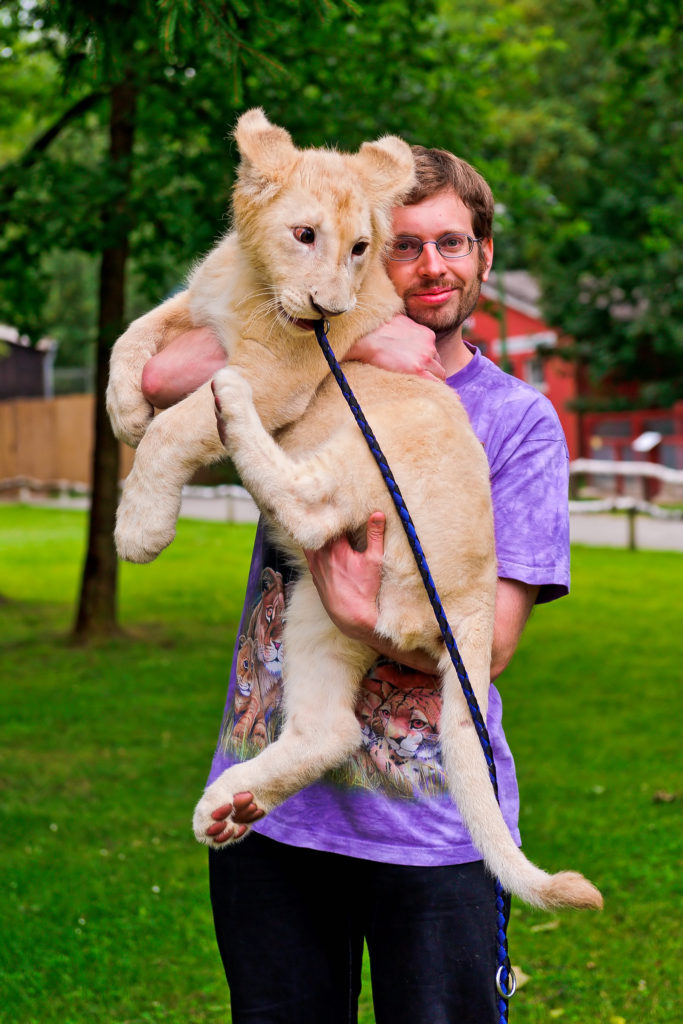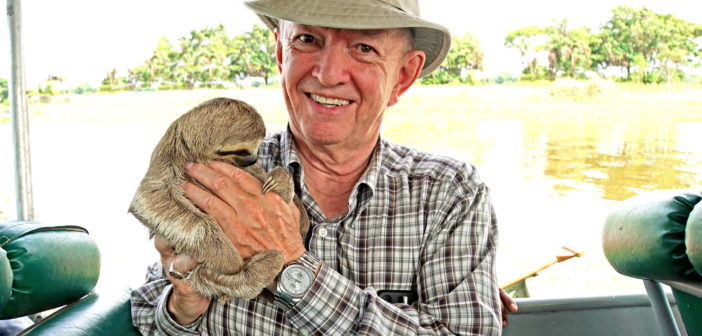Many videos and photos of wild animals interacting with humans become viral on the Internet. Although they may seem cute and cuddly or funny, you must resist temptation and not like, share or comment positively on them. There are many reasons for this, not only because the individual animals may be mistreated in order to take a picture, but also because popularizing the images can threaten the welfare and conservation of their entire species.
Many animals, especially primates, are depicted wearing human clothes, playing instruments, using tablets or cuddling dogs and other domestic animals. For example, Limbani the chimpanzee has about 650,000 Instagram followers. Of course, at a first glance he is very cute. The reality is, captive wild animals who are exposed to humans often are mistreated, stressed and suffer health issues. They are often taken away from their mothers when they are infants in order to make them used to human contact, disciplined and trained (usually with cruel methods) and when they grow old, they are likely to be abandoned or sold to poorly regulated facilities to attract tourists.
Furthermore, these “pets” are often kept without others of the same species. Many primates and other species are highly social and need the company of other animals like them to express natural behaviors such as communication, play, friendship and mating. If animals are unable to display their natural behaviors, it can cause deep psychological suffering that can even lead to self-harm. This suffering is often misinterpreted by their owners and other humans. The “chimp grin,” which we associate with happiness, for example, is actually a sign of fear or submission.

Unfortunately, many pictures depict people stroking, caressing and hugging wild animals. What you may think communicates love and affection could actually be causing stress and fear in the animals. You would never hug or stroke a stranger, even though these are gestures of affection and good intentions in the human behavioral repertoire. Then, imagine how an animal, who naturally does not interact with humans and usually has no idea what a caress is, feels when she is being touched by an unknown individual. Sharing images of people handling wild animals ignores the stress, the fear and the welfare of the animal being handled.
Photos of wild animals in human contexts can also skew the perception of their conservation status in the wild. Although they could actually be endangered in nature, seeing them in photos and videos makes people think that wild populations are not in jeopardy, undermining efforts to protect them and their environments.
Additionally, seeing wild animals interacting with humans makes them desirable as pets. Often these types of images are shared by tourists on vacation in exotic areas. This is a real problem, because it increases illegal trade in live animals and their parts. For example, the visibility of pet otters on social media in Japan boosted their demand to the point where now their survival in the wild is threatened. Moreover, social media is the perfect place for traffickers to find and sell live wild and exotic animals and attract buyers. In 2017, over six weeks, in France, Germany, Russia and the UK, over 11,000 protected wild animals, including tortoises, parrots, owls, primates and felines, were advertised online to be sold.

Wild animals who live in households with people who are not experts often suffer health issues. Many owners do not know how to care for them. They are often given inappropriate food, which can cause deformities to their bone structure and other physiological issues. They can become unable to perform natural behaviors because their wings were clipped or they were declawed and they were not provided with species-specific enrichment. Nocturnal animals who are naturally awake at night can become blind because they were forced to be awake during the day. Many times, they can become aggressive as they become adults, and are therefore abandoned or killed.
Seventy-four percent of animal-related tourist attractions in the world attract tourists by promising interactions with wild animals. This includes riding, walking or swimming with, feeding, washing, petting, holding and sometimes sleeping with the animals. Some of these facilities call themselves rescue centers or sanctuaries, but many of them actually profit off of the exploitation of animals. Lions, elephants and tigers are taken from their mothers to become attractions and allow tourists to take pictures with them to share on social media. Once again, they are tamed and cruelly trained to “perform” without harming people. They did not need to be rescued and were not saved, they were abducted and forced to live in a domestic environment for the thrill of humans.

Over half a million animals are kept as tourist attractions. These animals, who are bottle-fed when infants and will grow to be confident with humans, are often sold to trophy hunters once they are adults. If a facility offers interaction with animals for cash, it is not ethical and it is not respecting their nature. It is just an inhumane tourist trap.
Finally, feeding wild animals in their natural environment to catch a picture may seem like a friendly way to interact with them. Think again. It is never appropriate to give food to wild animals. First of all, what you are feeding them may not be suitable and could make them sick, or worse, poison them. Second, animals, who should be naturally fearful of humans, are lured to come close to people, driven by their desire for food. This will expose them to dangers if they get to close to someone who does not have good intentions, such as hunters and poachers, or if they become a danger for local human communities.
Social media users, before liking, sharing and commenting, should make sure that animals are not being exploited for money and their welfare is not being compromised. We have the responsibility to put animals’ well-being before our amusement. If you want to help animals, do not pay to interact with them. Observe them from a safe distance, be an ethical tourist, educate yourself and your friends, preserve their environments, and donate to organizations that truly protect them.
Featured image: a man holds a sloth. Images like these are not a positive influence on the lives of sloths. Image credit Dennis Jarvis, CC BY-SA 2.0.





